Brian Eno's Ambient Series

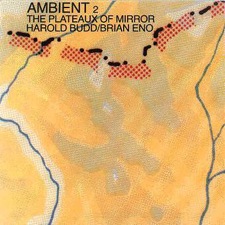
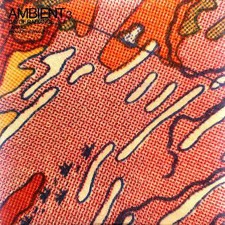

Each of the four albums is given the title “Ambient”, following whatever number release it was, and a more descriptive title after that. The use of Helvetica type in the top left corner is not unlike the typography of the Obscure Label album covers. However, each cover features a section from a colorful map, each varying in scale and terrain it depicts. I am not 100% positive where the idea for using maps for the covers originates, but I believe it starts with the first album, titled Ambient 1: Music for Airports, which Eno was inspired to compose for use in airport terminals where the busy atmosphere never ceases. The notion of airports with travel and maps are associated with travel makes me suspect this could be the intent of the design.
1978, Ambient 1: Music for Airports by Brian Eno
1980, Ambient 2: The Plateaux of Mirror by Harold Budd/Brian Eno
1980, Ambient 3: Day of Radiance by Laraaji, produced by Brian Eno
1982, Ambient 4: On Land by Brian Eno
Brian Eno's Obscure Label
All ten albums in the series feature the same background image formed from overprinting a photo of a city with black ink. However, each album – with the exception of one – has a unique small section that reveals the brightly-colored image underneath. The artist and title for each album remains consistently in the upper left in white Helvetica type. One could interpret these covers represent how this series is bringing each of these works out of obscurity, as the windows showing the photo underneath share what it is obscured by the overprint of the black ink.
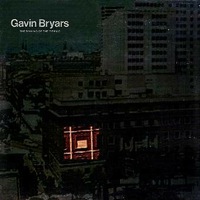




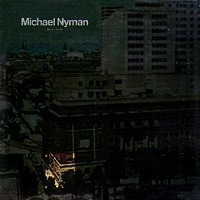


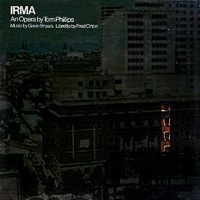

John Bonis of CCS was responsible for the design of the covers for the series. I am not able to find any other information on him or his work other than this project. After the departure of the Obscure label, some of the artists have released their albums with different album art, including Eno’s Discreet Music, Budd’s The Pavilion of Dreams, and The Penguin Café Orchestra’s Music from the Penguin Café Orchestra, making them part of the canon of their body of works. Unfortunately, at least half of these albums have not seen a release on CD, let alone a vinyl reprint, since 1982 on the EG Records label.
1975, The Sinking of the Titanic by Gavin Bryars
1975, Ensemble Pieces by Christopher Hobbs, John Adams, Gavin Bryars
1975, Discreet Music by Brian Eno
1975, New and Rediscovered Musical Instruments by Max Eastley, David Toop
1976, Voices and Instruments by Jan Steele, John Cage
1976, Decay Music by Michael Nyman
1976, Music from the Penguin Café by Members of the Penguin Café Orchestra
1978, Machine Music by John White, Gavin Bryars
1978, Irma an opera by Tom Phillips, music by Gavin Bryars, libretto by Fred Orton
1978, The Pavilion of Dreams by Harold Budd
Myst Book Series
As a middle schooler, I was more inclined to be reading non-fiction than any work of fiction, but upon finding a series of books at the library that had been written around the Myst series by the creators, I just couldn’t help but check them out for myself. Their plain worn cover design, not unlike the books that can be found in the Myst games, stood out on the shelf from the illustrative depictions found on the covers of most fiction books. I am surprised more book publishers do not take this approach to make the cover of a book ‘feel’ like it was extracted from the story and culture within the pages themselves, but then again it all is a matter of what is best for the marketing of the book.
Authored by Rand and Robyn Miller with David Wingrove (famed sci-fi author of the Chung Kuo series), each of the three books in the series was published in hardback by Hyperion Books in hardcover yearly from 1995 to 1997 titled Myst: The Book of Atrus, Myst: The Book of Ti’ana, and Myst: The Book of D’ni. These novels were meant for fans to read between the release of the original game and the release of its sequel, Riven. They worked as a back story to the series and, while not giving away plotlines or answers to the puzzles in the games themselves, gave substance and intricacy to the worlds depicted in the games.

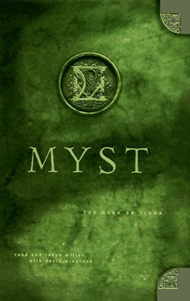
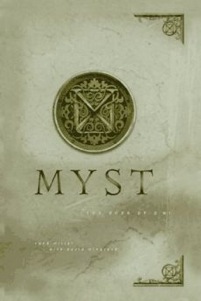

When looking at the covers, although they are not designed to perfectly match the layout of the trilogy, it is not a mistake to assume that they all belong together as part of the same series. Each volume’s cover contains the word ‘Myst’ boldly burnt above or below a decorative medallion inscribed with a number glyph from the D’ni, the fictional culture surrounding the series. The plain but worn-textured backgrounds reflect the mystery and history behind the stories in each novel.
The original hardcover editions have been long out of print but the books were eventually published as mass market paperbacks around the end of the 1990s and in 2004 an omnibus containing all three books in paperback, titled The Myst Reader, was released. The cover is faithful in the design and spirit of the three novels, with the overall color similar to that of the first book.
After the release of Riven in 1997, the Millers planned a forth novel, titled Myst: The Book of Marrim. The initial manuscript over time was rewritten substantially at least once and has yet to even be given any hint of a release date. If it ever were to come out, I wouldn’t be surprised if the look and feel of the cover were to continue where the first three novels left off.
Myst: The Book of Atrus by Rand and Robyn Miller with David Wingrove
Myst: The Book of Ti’ana by Rand and Robyn Miller with David Wingrove
Myst: The Book of D’ni by Rand Miller with David Wingrove
The Myst Reader: Thee Books in One Volume by Rand and Robyn Miller with David Wingrove
Overnight Sensations Books
Chronicle Books have always been a favorite publisher of mine, varying the subjects of their publications and having exquisite design from cover to cover. They recently published a set of travel books featuring luxurious hotels and locations from around the world, titled Overnight Sensations: Hotels for the Discerning Traveler. The covers for these three books $100 USD each are well-unified by the breathtaking photographs and consistent typographic layout.
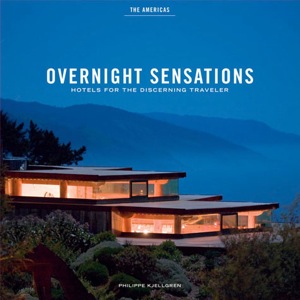


The author of the series is world-renowned hotel reviewer Philippe Kjellgren, who has done his fair share of traveling to over 100 countries in his lifetime. Skimming through the photographs of these will instantly transform any reader to the destinations featured throughout these books. Next time you are planning a vacation, you might desire your destination to offer the vistas shared in these pages.
Overnight Sensations: The Americas by Philippe Kjellgren
Overnight Sensations: Europe Middle East Africa by Philippe Kjellgren
Overnight Sensations: Asia Pacific by Philippe Kjellgren
found via Chronicle Books Blog